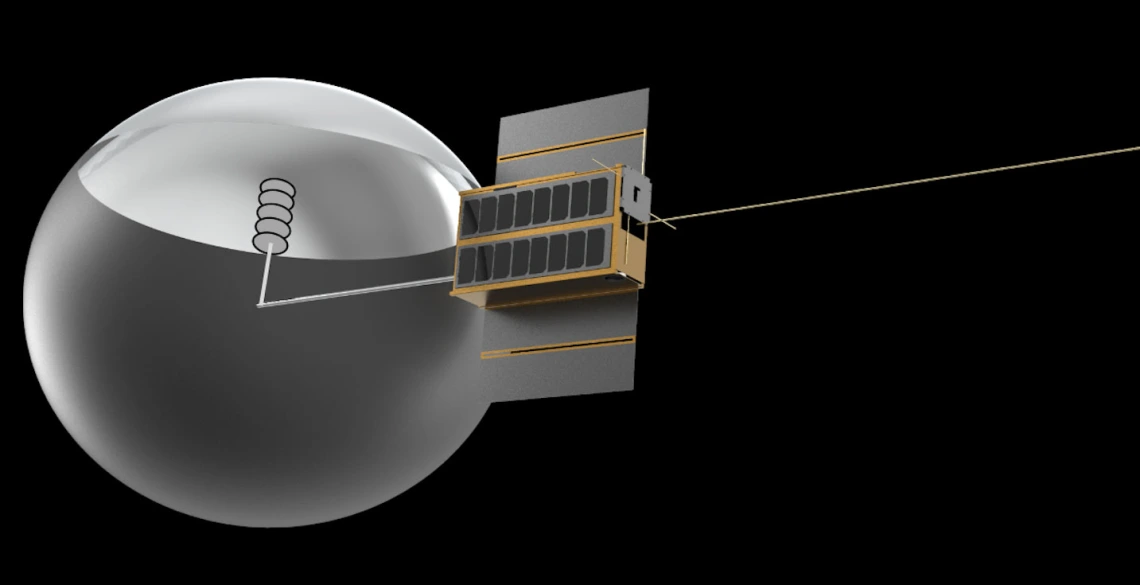UA Student-Led CatSat Mission Selected by NASA
UA students will get hands-on spacecraft hardware development experience thanks to NASA’s CubeSat Launch Initiative, which recently selected CatSat to fly as auxiliary payload aboard future space missions.

A rendering of CatSat, a nanosatellite being built by UA students. (Image: Vishnu Reddy)
An inflatable space antenna designed by University of Arizona students is one of 16 small research satellites from 10 states NASA has selected to fly as auxiliary payloads aboard space missions planned to launch in 2020, 2021 and 2022.
CatSat is a 6U CubeSat led by UA students from the Lunar and Planetary Laboratory and various departments including aerospace and mechanical engineering, astronomy, computer science, and systems and industrial engineering.
"This is a great opportunity for students to get hands on experience building a spacecraft and running a space mission," said Tanner Campbell, an aerospace and mechanical engineering doctoral student who is serving as project manager for CatSat.
Two engineering principal investigators -- Roberto Furfaro, a professor in the Department of Systems and Industrial Engineering, and Jekan Thanga, an assistant professor in the Department of Aerospace and Mechanical Engineering -- are leading the student teams who are building the actual spacecraft hardware on campus.

